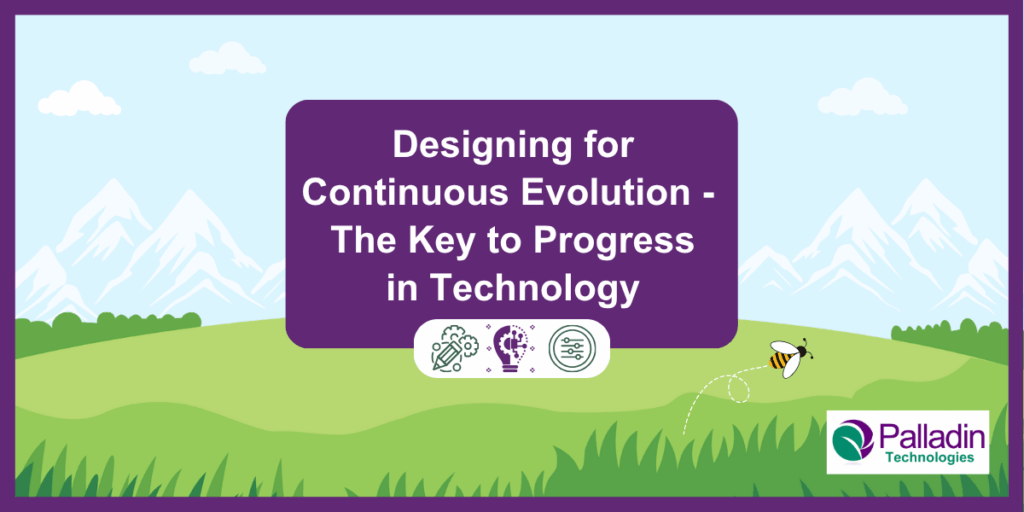Understanding Continuous Evolution
In the realm of technology, much like in nature, change is constant. We face a fundamental choice: to evolve and adapt, or to stagnate. The concept of continuous evolution moves beyond the traditional Software Development Lifecycle (SDLC) model, where a project is simply “finished.” Instead, it is an ongoing process of improvement.
After an initial project completion and a period of “settling”, a roadmap is established to plan for subsequent changes. This roadmap guides continuous improvements, delivered in both planned small increments and larger strategic shifts. This approach fosters a culture of adaptability, which is an essential skill, especially when working in technology.
Examples of Continuous Evolution
Evolution and change are seen in all aspects of life. The pace of change and advancement across all industries is often hard to keep up with, highlighting the necessity of this continuous mindset.
Telecommunications:
- From: Landlines and copper wires, slow dial-up internet, basic mobile phones (voice/SMS).
- To: Fiber optics (FTTH), high-speed 5G networks, Voice over IP (VoIP), unified communications, and the Internet of Things (IoT).
Media:
- From: Physical formats (vinyl, tapes, CDs, DVDs), scheduled broadcast TV, print newspapers and magazines.
- To: Streaming services (on-demand video/music), digital subscriptions, interactive content, personalized recommendation algorithms, and social media news dissemination.
DevOps:
- From: Siloed teams (Development and Operations), long release cycles (months), manual deployment, waterfall methodology.
- To: Continuous Integration/Continuous Delivery (CI/CD), Infrastructure as Code (IaC), microservices and containerization (Docker, Kubernetes), automated testing, and site reliability engineering (SRE).
Why Continuous Evolution is Critical
Evolution is intrinsically linked to progress. By embedding a framework for continuous evolution into our delivery process, we ensure that we remain ahead of the curve.
The alternative – a culture of resistance to change – results in stagnation, making it difficult to adjust when necessary. Successful adoption of continuous evolution drives growth.
To thrive and adapt in an environment of constant change, organizations need to embrace these core principles. This is true for Salesforce implementations, as well as broader technology initiatives:
- Cultivate an Open Mindset: Be willing to consider different perspectives and execute necessary changes.
- Build a Trusted, Diverse Team: Establish a varied team structure where all voices are heard and valued.
- Make Smart Technology Choices: Conduct cost-benefit analyses when deciding whether to build a custom solution, use out-of-the-box (OOB) functionality, or adopt a third-party application.
- Prioritize Long-Term Planning and Cost-Effectiveness: Ensure sustainability through strategic and financially prudent decisions.
- Develop a Rollback Strategy: Ensure a plan is in place to revert changes if issues arise.
- Support Continuous Improvement with Releases: Design release cycles that facilitate ongoing enhancements.
- Integrate Tech Debt Reduction: Make technical debt management a dedicated part of the continuous improvement process.
- Maintain Regular Health Checks: Stay updated and ready to pivot by conducting frequent assessments.
- Identify Internal Change Advocates: Leverage individuals within the organization who champion and promote change.
- Invest in Personal Growth and Training: Build a resilient, knowledge-centered workforce by including individual development goals.
Conclusion
At Palladin, we see every project as a living system. The failure to plan for and adapt to a continuously changing technological landscape poses a significant risk to an organization’s future. Because evolution is not what happens after go-live, it is designed and baked into the everyday. Continuous evolution is not optional; it is the basis of sustained progress.
Learn More About Partnering With Us!
Innovation Product Manager
Divya is an Innovation Product Manager and a seasoned Salesforce expert with 11 years of experience. She began her career as a developer before transitioning into functional and strategic roles across various industries. Her expertise spans Salesforce consulting, business analysis, and IT leadership, making her a valuable asset in driving innovation and process optimization. Before joining Palladin, Divya held key roles at Johnson Controls, Deloitte, and Appirio, where she led Salesforce enhancements, product strategy, and large-scale business transformations. She holds multiple Salesforce certifications, including Sales Cloud Consultant, Experience Cloud Consultant, and Platform App Builder, along with a BCS Business Analysis certification. Divya is passionate about leveraging technology to solve complex business challenges, enhance efficiency, and drive digital transformation.

